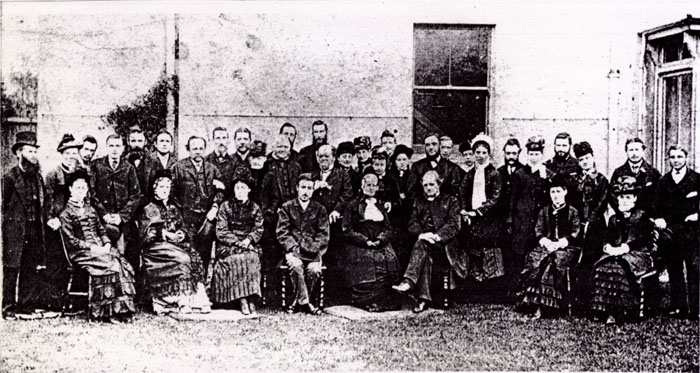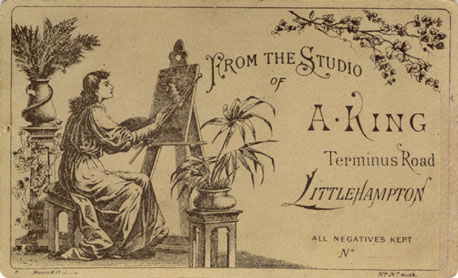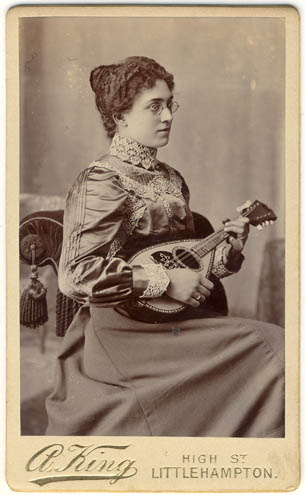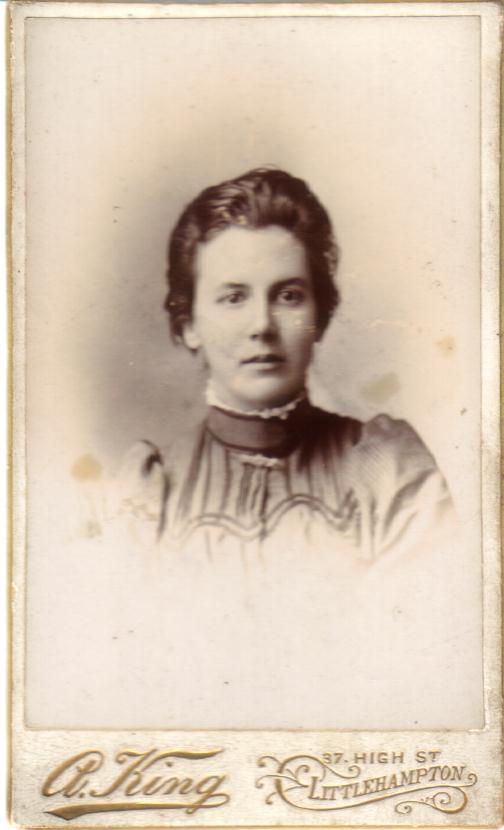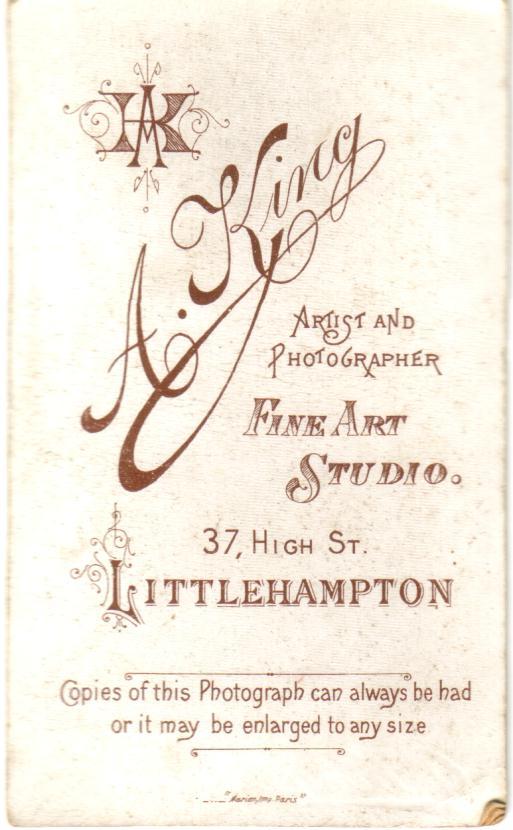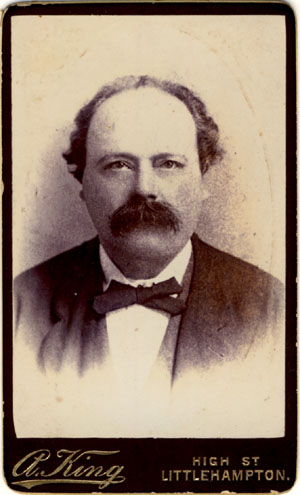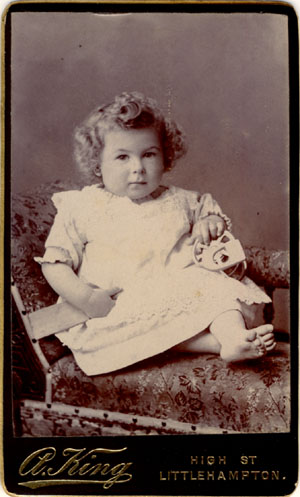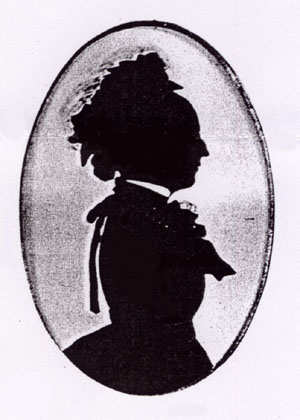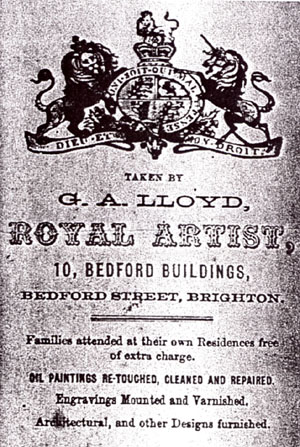| George Azariah Lloyd
was born at 2 Queen Street, Westminster, London on 25th March 1821, the son of Mary Ann and James Lloyd,
a carpenter and builder.
George was baptised at St James's Church, Westminster, some ten months
later on 13th January 1822. George had at least two siblings - Mary
Ann Lloyd (born 1818, Westminster) and Frederick Edwin
Lloyd (born 1824, Westminster). In
1846, George Lloyd sired a son, who was named George Azariah Lloyd
after his father. George Azariah Lloyd junior was born in
Staines, Middlesex on 19th September 1846. On George junior's birth
certificate, George Azariah Lloyd's's occupation is given as "Artist". A couple of years later, on 4th December 1848, George Azariah Lloyd married
fellow artist
Elizabeth Clark (born c1827, Coventry, Warwickshire) in the city of
Bristol. Elizabeth Clark was the daughter of Elizabeth and
John Carter Clark, a watchmaker from Coventry and was Christened in
Coventry on 24th February, 1828. On their marriage certificate, George
Lloyd and his bride Elizabeth Clark are both described as artists.
[ABOVE] Profile portraits by George Azariah Lloyd (c1866).
Lloyd produced silhouette likenesses cut from black paper as well as
photographic portraits. [ABOVE RIGHT] The Trade Label of George Azariah
Lloyd, which declared he was a Royal Artist (c1866)
George Azariah Lloyd earned a living by making portraits either by painting or,
more usually, by cutting profiles from black paper. As a young man,
George Lloyd was a travelling artist. In the mid 1840s, George was
working as an artist in the London area. At the time of his marriage in
1848, George Lloyd was in Bristol. A son, William Lloyd,
was born in 1849, when George and Elizabeth were living at Lichfield in
Staffordshire. By 1850, the Lloyds were back in the Bristol area. A
daughter named Elizabeth Lloyd was born at Clevedon, near Bristol
around this time. When the 1851 census was taken, George Lloyd and his
family were recorded at an address in Plymouth St Andrew in Devon.
George A. Lloyd is described as an "Artist" on the 1851 census return.
By 1853, the Lloyds had returned to Somerset and had made their home in
the district of Bedminster, one mile south of the city of Bristol. Mary
Ann Lloyd was born at Bedminster in 1853 and another daughter, Emily
Lloyd was born at Regent Road, Bedminster in 1856. By 1861, George Lloyd
and his family were living in London, where a son Thomas Lloyd
was born. The 1861 census records George Lloyd and his family at 22
Princes Row, Westminster, London. George Lloyd gives his profession
as "Artist" and his wife Elizabeth is described as a "Nurse". Six
children are listed on the 1861 census return - George (junior), aged
14, William, aged 12, young Elizabeth, aged 10, Mary Ann, aged 8, Emily,
aged 5, and baby Thomas.
G. A. Lloyd in Sussex
After a period as an itinerant
artist, George Azariah Lloyd settled in the Sussex seaside resort of Brighton
around 1863. G. A. Lloyd is recorded
as a profile artist based at 10 Bedford Buildings, Bedford Street,
Brighton. George A. Lloyd was one
of several artists who worked as profilists or silhouette cutters on
Brighton's Chain Pier in the mid 19th century. It appears that Lloyd was
creating "profiles" on the Chain Pier in the mid 1860s, but, by 1868, he
added photography to his more traditional portrait making skills. G. A.
Lloyd is listed as a "Photographic Artist" at 3a Chain Pier, Brighton
in 1868 and 1869. George Azariah Lloyd was probably still living in
Brighton in the early Summer of 1869, when the marriage of his son
George Lloyd junior took place in the town. [George Azariah Lloyd
(junior) married widow Mrs Jane Angelina Brown in Brighton on 5th July
1869].
By early August 1869, George Azariah
Lloyd was working in the seaside resort of Littlehampton and in
the first ever issue of The Littlehampton News, dated 7th August
1869, he placed the following advertisement :
|
Photographic
Artist and Profilist |
|
Next Door to Mr Staples' Fancy Shop, near
Congregational Church, LITTLEHAMPTON |
|
Carte-de-visite 5/- per dozen or 3/- the half
dozen. Single card 1/- . Glass pictures from 6d and
1/- |
|
Families attended at their own residence, Free of
extra charge. |
|
Groups
also taken. Charges made according to the size |
|
By 1871, Lloyd was back
in Brighton. At the time of the 1871 census, George Lloyd was living
with his wife Elizabeth and four of their children at 10 Bedford
Buildings, Kemptown, Brighton. George Lloyd is recorded as a
"Photographer" on the census return. Emily Lloyd, George's
fifteen year old daughter, is described as an assistant in her
father's photography business. There had been two additions to the
Lloyd family since their arrival in Brighton - James Lloyd
(born 1863) and John Lloyd (born 1865).
At the end of February 1873, George Lloyd applied to
the Brighton Watch Committee for permission to have a stand on
Brighton seafront, "where he may earn a livelihood by cutting
profiles". On 3rd March 1873, the Brighton Watch Committee came
to the conclusion that "the application cannot be entertained"
and refused Lloyd's request.
After the rejection of
his application for a licence in Brighton, George Lloyd moved on to
Worthing, where he briefly operated as a photographer at 23 North
Street. The Sussex Post Office Directory of 1874 lists George Lloyd
as a photographer at North Street, Worthing.

[ABOVE] The signature of George Azariah Lloyd, taken from the reverse of
a carte-de-visite (c1874).
After a short period at
23 North Street, Worthing, George Lloyd and his wife returned
to Brighton. On 21st March 1878, George's wife, Elizabeth died in Brighton at
the age of 50. Elizabeth Lloyd had been paralysed and had died from
tubercular meningitis at the Brighton Workhouse Infirmary. At the
time of Elizabeth's death, George Azariah was earning a living as a
"Profilist".
|

|
[ABOVE] A photographic portrait, believed to be of the
artist George Azariah Lloyd (1821-1900).
[ PICTURE: Courtesy of Janey Haselden ] |

[ABOVE] Chain Pier, Brighton (c1870). A photograph taken from the
head of the Chain Pier looking through the arched towers to the
Esplanade and Marine Parade. At the base of the iron towers on the Chain
Pier were small booths and kiosks, selling gifts and refreshments. The
Chain Pier towers were favourite locations for profilists and silhouette
artists. In the late 1820s, John Gapp was operating from the "Third
Tower" cutting full-length portraits from black paper. The profilist
Edward Haines was working from one of the towers on the Chain Pier from
1845 to 1859. George Azariah Lloyd was cutting profiles from Tower No 3
around the time this photograph was taken.
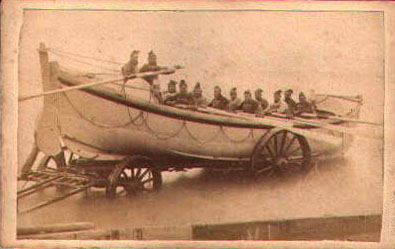
[ABOVE] A carte-de-visite by G. A. Lloyd, showing the Worthing
lifeboat with its crew (c1873).

[ABOVE] A carte-de-visite portrait of a young woman by G. A. Lloyd,
23 North Street, Worthing (c1873). |
